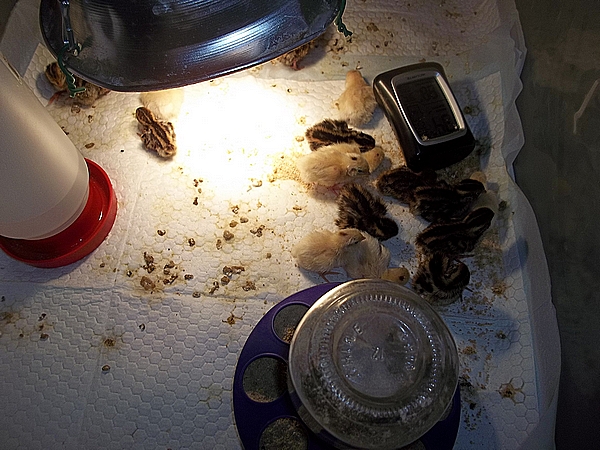GENERAL DISCUSSION: Much needed Affordable Sizable DIY Mosquito Control System
Affordable Sizable DIY Mosquito Control System should cost little to make and operate and due to it’s size should work better than anything on the market. Our unit uses commonly found items, like 5-gallon buckets, yeast, deer feed and boric acid. And it is non-lethal to pets and bees.
We have a new project and want to show basic concept and feasibility and urge you to follow and add your improvements as well! It is only in concept state now but the whole project as stated so far would take a few hours to get up and running. It is a little to cold here for this to activate and as of now we have no skeeters to target 🙂
UPDATE: After 2 months with less than 1/2″ of rain, we may have a chance to bring a hands-on prototype to the page! 5 days of “Great chance of rain”!
Background:
The problems with mosquitos are many ranging from annoying to deadly with pain right in the middle. They carry many blood borne diseases. The range of the mosquito pretty much covers the entire globe. There are many ways to combat these deadly pests. Poison sprays , baits as well as environmental programs as well.
Mosquitos require stagnant water in order for their eggs to hatch and grow. Eliminating pools of standing water in and around your home-site will help tremendously in reducing populations. Even tin cans full of water can help 1000's of mosquitos to grow and hatch! They must feed to be able to have the eggs hatch. While a female mosquito is the one that bites it also feeds on nectar like the male does. This is where our bait will kill them both!
Poison sprays can be harsh as in malathion or mild as in boric acid and sugar water. Most chemicals will also kill bees and helpful insects. Boric acid is relatively harmless to bees but can kill them. The design we are sharing here in this article keeps the bees from accessing the poison!
https://npic.orst.edu/factsheets/boricgen.html
Mosquitos are also attracted to CO2 [carbon dioxide] which we emit in our breathing process. They also are attracted to various light waves. As the project evolves we will place our source finding here for those who may benefit. We urge you to post your findings as well :)
BASIC CONCEPT:
The perfect “Affordable Sizable DIY Mosquito Control System” should do all the following:
- 1] attract mosquitos without allowing access to bees
- 2] Introduce poison to targeted pest
- 3] Provide for a CO2 generator
- 4] Includes a light source for attracting the pest [ for later development]
- 5] Device should be affordable by using readily available items as it will take a few devices per home-site to be effective
We propose that our device will provide for the above requirements and can be made cheaply with items readily available in most homes or big box hardware stores. That bucket you passed on the road on the way to work is what I am talking about :)
Hey it does not have to be a 5 gallon bucket! It works nicely in smaller sizes. The company that makes “Spartan”” has a system in a quart size but uses more attractants than we suggest.
https://www.domyown.com/spartan-mosquito-pro-tech-mosquito-eradicator-kit-p-24121.html
Adding a lite source and timed sprayer would not be to costly and would work for locations closer to your entertainment areas or animal housing where the mosquitos are actively hunting a meal.
Equipment needed:
- 1] One 5-gallon plastic bucket and lid
This will serve as the CO2 generator and outer shell of our device. Here you will add corn/sugar/water/yeast mix that will become the active CO2 generating mixture in which the yeast will break down the sugars and produce CO2 as a byproduct. Think whiskey production :)
- 2] Regular household screen wire. Stainless would be better.
This will be stationed above the level of the fermenting corn mash to keep mosquitoes from accessing it and encouraging them to take the poison bait which will be placed higher in the bucket. Best suggestion is cutting a ring of plastic from an old bucket as a retaining ring. placing the wire over the ring then trimming and placing it in the bucket. HOWEVER SOME HAVE USED A THIN WOODEN LATHE WITH GREAT SUCCESS. NOTE: If you use the bucket ring, placing the wire over the ring will increase the assembly's diameter and will place the wire covered ring slightly higher in the design bucket than the height it was at before it was cut from sacrificial donor bucket. In conclusion, trial and error will tell what size ring to use but I am sure it will be apparent when looking at the bucket
- 3] Bait holder wire shelf for boric acid poison bait.
This can be hardware cloth or screen. The hardware cloth would allow black soldier flies to enter to the screen wire layer below IF they could squeeze into the bucket lid designed to ban bees from entering. Black soldier flies will lay eggs on the wire and produce larvae for your compost bin. While letting them get close to the corn mash,. it will prevent the mosquitos from eating it instead of the bait. Placing it with the same "ring method" described in part 2 will work nicely.
- 4] Bait pan
This will rest on the uppermost layer and will contain a solution of 3% boric acid and sugar water that mosquitos will eat. It should cover about 1/2 of the surface area and be shallow to allow mosquitoes to feed on it. As information is gathered it may contain a wicking material which would be ideal! At this time, I am not sure the consistency of the bait, if it should be more solid or more of a liquid or in between. I am basing this on the product Spartan System Mosquito Control
- 5] Bucket Lid.
We can do this in multiple ways. I suggest cutting out a small panel and adding a wire mess that will allow mosquitos and not allow bees to enter. As the project grows we will post finding of mesh size and material as we find them. Basically the panel should be small enough to allow many to enter at a time while holding some of the generated CO2 to build up and disperse slowly and still have an attractant strength. Another thought would be a 3-d print that would include slots instead of holes to easier and more accurately exclude bees.
POSSIBLE ENHANCEMENTS:
Surely we could also add a small "bug lite" to the device either solar or battery powered for nighttime use. Similarly at night we could also use a timed sprayer of some sort of contact insecticide as well that will externally kill nighttime flyers and not daytime pollinators.
In conclusion:
The basic idea is to attract mosquitos with the CO2 then offer poisoned bait using fairly safe boric acid and sugar water while excluding bees with sized entrance obstacles. This same methodology can be used in various container sizes to suit you needs. Please leave any input to help this project mature. We will update as we commence our trials as well. I would think it will be a month at least before the skeeters start their yearly assault



